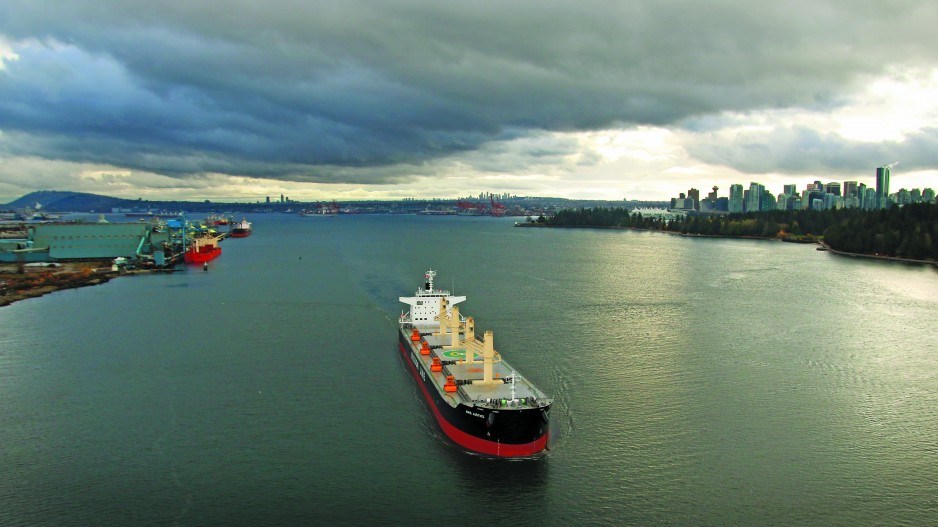The Port of Vancouver smashed cargo records for the first half of 2021 with overall cargo volumes through Canada’s largest port hitting a record high of 76.4 million tonnes (MMT). That is up 7% from 2020 mid-year and 5% above 2019’s previous record.
Vancouver Fraser Port Authority president Robin Silvester said record grain volumes in the first half of the year demonstrate the continued growth in the global demand for Canadian agricultural products.
Silvester said he expected the surge after the slowdown early in the pandemic would have slowed by now.
“It really has just kept on going,” he said.
“Over many years, we have worked with partners to support the growth of the agricultural sector, and over the last decade there has been a very significant amount of investment in the port and the surrounding gateway by grain terminals, governments, railways, port customers and the port authority, with much of that investment."
Sectors experiencing strong growth included grain and containers, both hitting record highs in 2021.
Strong foreign demand for Canadian grain products resulted in record mid-year volumes of bulk grain, up 20% to 16.5 MMT compared with mid-year 2020 and up 35% from 2019.
Total foreign tonnage and foreign exports resulted in 60.3 MMT and 52.0 MMT, up 4%, respectively, compared with mid-year 2020 volumes, due to strong increases in grain and coal shipments.
Metallurgical coal increased 11%; thermal coal remained flat. In fertilizers, potash exports increased by 0.3% from last year and sulphur decreased by 20%.
Container quantities (measured by TEUs or 20-foot equivalent units) in 2021’s first half increased by 24% compared with mid-year 2020 to a record 1.9 million TEUs, 15% above the previous 2019 record set in 2019.
The port attributed that rise to the strengthening economy and the continued growth in global demand for Canadian products shipped in containers, and increased Canadian demand for Asian consumer and manufacturing goods.
However, the number of empty containers leaving the port jumped 115.3% and the number of inbound empties dropped 81.7% compared with 2020’s first six months.
Silvester said with holidays not an option for most people during the pandemic, consumers have been spending on goods rather than on travel and other service sector items.
And, with most manufactured goods coming from Asia, shipping companies can realize greater financial returns by getting empty containers back to Asia as soon as possible rather than waiting for those containers to be filled in Canada.
A U.S. Federal Maritime Commission report released in March said global container supply generally kept up with container port handling in 2020, but containers have not been where they need to be.
“Reporting shows containers are stuck in depots for more than 30% longer than usual, even in the places where they are needed most,” commissioners said. “As a result, carriers are willing to ship empty containers back to China, in order to avoid the time it takes for the containers to be refilled with exports and the downtime for exports to be unloaded and the containers refilled upon their arrival in China.”
The commissioners said the most obvious answer to a container shortage is to manufacture more containers.
“Most containers are made in China, so we were pleased to see the Chinese government encourage an increase in container manufacturing in recent months and investment in containers increasing. We have, however, seen some reporting that indicates this encouragement may not have been heeded, and we hope that is not the case. Regardless, containers take time to build, and furthermore, simply injecting more boxes into the system will not solve the problem unless other bottlenecks are also addressed.”
Silvester said a shortage of land near ports where containers can be quickly filled for export is part of the problem. Waiting for them to be filled inland is also an issue.
He said a “fragmented planning process” in the Lower Mainland is a part of the program.
“Communities need to work together.”
Twitter.com/jhainswo




